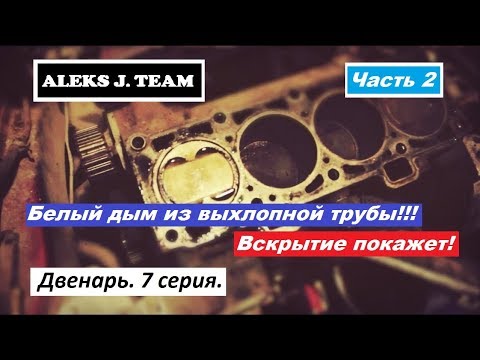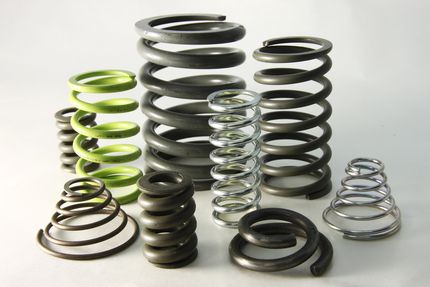
White smoke from the exhaust pipe
Content
White smoke from the exhaust pipe in winter is a frequent occurrence, therefore, usually, few people pay attention to it, but in summer, when it is warm, thick white exhaust is alarming, both for owners of diesel cars and cars with gasoline ICE. Let's figure it out why is there white smoke from the exhaust Are the reasons dangerous?and how to know its origin.
Harmless smoke, or rather steam, white in color, should not have a special smell, since it is formed due to the evaporation of accumulated condensate in the pipes of the exhaust system and in the internal combustion engine itself at an air temperature below + 10 ° C. Therefore, do not confuse it with smoke, which will show the presence of problems in the cooling system or the motor itself.
White smoke is a sign of high humidity in the exhaust system.. After the internal combustion engine warms up, steam and condensate disappear, but if smoke still comes out of the exhaust, then this is a sign of an internal combustion engine failure.
White smoke from exhaust cause
Most of the problems that cause white smoke from the exhaust pipe appear due to overheating of the internal combustion engine or impaired fuel supply. Paying attention to the hue of the smog, its smell and the general behavior of the car, you can pinpoint the cause of the smoke. The most common are:
- The presence of moisture.
- Presence of water in fuel.
- Incorrect operation of the injection system.
- Incomplete combustion of fuel.
- Coolant entering the cylinders.
It is worth noting that some of the reasons why dangerous white smoke appears from the exhaust pipe of a diesel engine and the exhaust of a gasoline engine may have different origins, so we will deal with everything in order, and separately.
White smoke from the exhaust pipe of a diesel engine
White exhaust in the warm-up mode of a serviceable diesel engine is quite normal. But after the internal combustion engine has reached operating temperature, such smoke may indicate:
- Solar condensate.
- Incomplete combustion of fuel.
- Overflow of fuel as a result of a malfunction of the injectors.
- Coolant leak into manifold.
- Low compression.
In order to diagnose a specific cause, you need to take a few simple steps:
- First, the refine smoke color, it is pure white or has some shade (bluish smoke indicates oil burnout).
- Second, the check coolant level on the presence of exhaust gases и presence of oil in the cooling system.
Whitish gray exhaust when warm may indicate untimely ignition of the mixture. This color of smoke indicates that the gases that were supposed to push the piston in the cylinder ended up in the exhaust pipe. Such smoke, as well as during the evaporation of moisture, disappears after warming up, if everything is in order with the ignition of the car.

Symptoms of burnout cylinder head gaskets
Presence of thick white smoke и after warming up, indicates ingress of coolant into the engine cylinder. The site of liquid penetration can be burnt gasketAnd crack. You can check the theory of coolant getting out of the cooling system like this:
- opening the cap of the expansion tank or radiator, you will see an oil film;
- the smell of exhaust gases can be felt from the tank;
- bubbles in the expansion tank;
- the liquid level will increase after starting the internal combustion engine and will decrease after it stops;
- pressure increases in the cooling system (can be checked by trying to compress the upper radiator hose when starting the engine).
If you notice signs of coolant getting into the cylinders, then further operation of a faulty internal combustion engine is not recommended, since the situation can quickly worsen due to the decrease in the lubricity of the oil, which gradually mixes with the coolant.
Antifreeze in engine cylinders
White smoke from the exhaust pipe of a gasoline engine
As mentioned earlier, the release of white steam from the exhaust in cold and humid weather is a completely natural phenomenon, before warming up, you can even observe how it drips from the muffler, but if the internal combustion engine has an optimal temperature and the steam continues to escape, then you can be sure that the internal combustion engine there are problems.
The main reasons why white smoke comes out of the exhaust pipe of a gasoline engine are:
- Leaking coolant cylinder.
- injector failure.
- Low-quality gasoline with third-party impurities.
- Burnout of oil due to the occurrence of rings (smoke with a hint).
The reasons why white smoke may appear from the exhaust of a gasoline car may only partially differ from those related to a diesel engine, so we will pay more attention to how to check what exactly caused the smoke to fall.
How to check why there is white smoke?

Checking for white smoke from muffler
The first thing to check with constantly going white smoke is to remove the dipstick and make sure that neither the oil level nor its condition has changed (milky color, emulsion), because the consequences of water entering the oil are the worst for internal combustion engines. also from the exhaust there will be not pure white smoke, but with a bluish tint. This characteristic oil smoke from the exhaust pipe stays behind the car for a long time in the form of fog. And by opening the cap of the expansion tank, you can notice a film of oil on the surface of the coolant and smell the smell of exhaust gases. By the color of soot on the spark plug or its absence, you can also recognize some problems. So, if it looks like new or completely wet, then this indicates water has entered the cylinder.
The principle of checking exhaust gases with a white sheet of paper
Make sure the origin of the smoke will help also white napkin. With the engine running, you need to bring it to the exhaust and hold it for a couple of minutes. If the smoke is due to ordinary moisture, then it will be clean, if oil gets into the cylinders, then characteristic greasy spots will remain, and if antifreeze seeps out, then the spots will be bluish or yellow, and with a sour smell. When indirect signs indicated the cause of the appearance of white smoke from the exhaust, then it will be necessary to open the internal combustion engine and look for a clear defect.
Liquid can enter the cylinders either through a damaged gasket or a crack in the block and head. It is worth noting that with a broken gasket, in addition to smoke, ICE tripping will also appear.
When looking for cracks, pay special attention to the entire surface of the cylinder head and the block itself, as well as to the inside of the cylinder and the area of \uXNUMXb\uXNUMXbthe intake and exhaust valves. With a microcrack, it will not be easy to find a leak, you will need a special pressure test. But if the crack is significant, then continued operation of such a vehicle can lead to water hammer, since fluid can accumulate in the space above the piston.
Emulsion on the lid
It may happen that you do not smell exhaust in the radiator, the pressure does not rise sharply in it, but at the same time there is white smoke, an emulsion, instead of oil, and the liquid level drops rapidly. This indicates the ingress of fluid into the cylinders through the intake system. To determine the reasons for the ingress of water into the cylinders, it is enough to inspect the intake manifold without removing the cylinder head.
Please note that all defects that lead to the formation of white smoke need more than just eliminating the direct causes. These problems are caused by overheating of the internal combustion engine, and therefore it is imperative to check and repair breakdowns in the cooling system.
